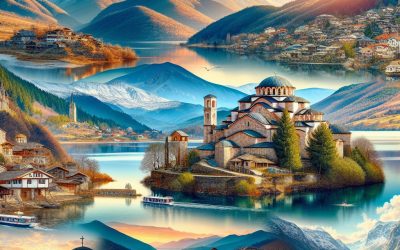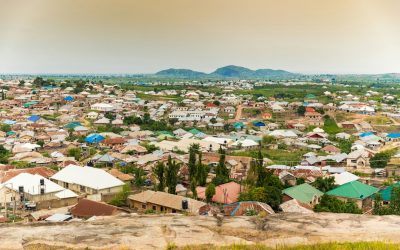Explore the World Through Geography, Natural Resources & Daily History
Clear, reliable and engaging guides that help you understand our planet — from UK geography education to global natural resources and On This Day history events.
Explore, discover, and learn about the wonders of our world! At Earth Site, we’re passionate about bringing geography, history, and science to life for curious minds of all ages. Whether you’re delving into historical events, uncovering the mysteries of the natural world, or seeking interactive resources, you’re in the right place.
Here, you can uncover the stories behind historical events, explore the natural wonders of our planet, and gain valuable insights into how the Earth’s systems shape our daily lives. From the towering peaks of mountain ranges to the far-reaching impacts of human innovation, we aim to make every topic both engaging and informative.
Start your journey of discovery with us today, and let’s make learning an adventure!
What We Cover
Earth Site brings together engaging and accessible educational content designed to help you understand the world, its history, and its natural systems.
🌍 Geography Education (UK & Worldwide)
We publish clear, easy-to-understand geography resources for students, teachers and curious learners. Our guides support geography education in the UK and cover physical geography, climate, ecosystems, population, and global development.
⛏️ Natural Resources & Environmental Geography
Explore detailed country profiles covering natural resources, mining, energy, geology and global environmental challenges. We show how nations manage minerals, water, land and ecosystems, and why these resources matter.
📅 On This Day in History
Every day has a story. Our On This Day history series features major events, anniversaries, traditions, and cultural milestones from around the world — with timelines, context, and fun facts.
TIMELINE
Discovering the Hidden Gems of Oman: A Journey Through the Arabian Paradise
Oman, located on the southeastern coast of the Arabian Peninsula, is a hidden gem waiting to be discovered by travelers. With its rich history, stunning landscapes, delicious cuisine, and warm hospitality, Oman offers a unique and unforgettable experience for visitors. Oman has a long and fascinating history that dates back thousands of years. It was once a major trading hub and played a significant role in the maritime Silk Road. The country has been influenced by various civilizations, including the Persians, Portuguese, and Ottomans. Today, Oman is known for its peaceful coexistence of tradition and modernity. For travelers seeking an authentic Arabian experience, Oman is a must-visit destination. The country offers a wide range of attractions and activities that cater to all interests. Whether you’re interested in exploring ancient forts and museums, hiking through rugged mountains, or relaxing on pristine beaches, Oman has something for everyone. Summary Oman is a stunning destination in the Arabian Peninsula with a rich cultural and historical heritage. Visitors can explore ancient forts, mosques, and markets to learn about Oman’s past and present. The country’s natural wonders, including mountains, deserts, and beaches, offer endless opportunities for adventure and relaxation. Oman’s cuisine is a delicious fusion of Arab and Indian flavours, with must-try dishes like shuwa and biryani. Traditional crafts and souvenirs, such as frankincense and silver jewellery, make for unique and meaningful gifts. Exploring Oman’s Cultural and Historical Sites Oman is home to a rich cultural heritage that is deeply rooted in its history and traditions. The country boasts numerous cultural and historical sites that offer a glimpse into its past. From majestic forts...
Exploring the Fascinating World of Paucituberculata: Britain’s Shrew Opossums
Shrew opossums, belonging to the order Paucituberculata, are a group of small marsupials that are native to South America. However, what many people may not know is that there is a species of shrew opossum that can be found in Britain. These fascinating creatures are known for their unique physical characteristics and interesting behavioural patterns. In this article, we will explore the taxonomy, physical characteristics, habitat and distribution, behavioural patterns, feeding habits, reproduction and life cycle, threats and conservation status, importance in ecosystems, and future research and conservation efforts of shrew opossums in Britain. Summary Paucituberculata are shrew opossums found in Britain. Shrew opossums are classified as marsupials and are closely related to kangaroos and koalas. Shrew opossums have a small body size, pointed snouts, and prehensile tails. Shrew opossums are found in the Andes Mountains and have not been observed in Britain since the Pleistocene era. Shrew opossums are solitary and nocturnal animals that feed on insects, small mammals, and fruits. Taxonomy and Classification of Paucituberculata Shrew opossums belong to the order Paucituberculata, which is a small group of marsupials that is only found in South America. They are further classified into the family Caenolestidae, which consists of four genera: Caenolestes, Lestoros, Rhyncholestes, and Caenolestoides. The shrew opossum species found in Britain is known as the British shrew opossum (Caenolestes britannicus). This species was first discovered in the early 20th century and has since been the subject of much scientific interest. Physical Characteristics of Shrew Opossums Shrew opossums are small mammals, typically measuring around 10-15 centimeters in length. They have a slender body with short legs and a...
Exploring the Hidden Gems of Guinea-Bissau: A Journey Through West Africa’s Best-Kept Secret
Nestled on the western coast of Africa, Guinea-Bissau is a hidden gem waiting to be discovered. This small country, often overlooked by tourists, offers a unique blend of rich culture, untouched beaches, diverse wildlife, traditional villages, mouth-watering cuisine, vibrant music and dance, stunning architecture, and warm hospitality. With its unspoiled beauty and authentic experiences, Guinea-Bissau is a must-visit destination for those seeking an off-the-beaten-path adventure. Summary Guinea-Bissau is an unexplored jewel in West Africa with a rich culture and history. The untouched beaches of Guinea-Bissau offer a paradise for sun-seekers. The biodiversity of Guinea-Bissau is home to rare and endangered species. Traditional villages in Guinea-Bissau offer a glimpse into rural life. The cuisine of Guinea-Bissau is a delicious blend of African and Portuguese flavours. The Rich Culture and History of Guinea-Bissau: A Window into the Past Guinea-Bissau’s history is deeply intertwined with the legacy of colonialism. The country was once a Portuguese colony and gained independence in 1973 after a long and bloody struggle. The influence of colonialism can still be seen in the architecture, language, and cultural practices of the people. Furthermore, Guinea-Bissau played a significant role in the transatlantic slave trade. The country’s location made it a prime hub for the transportation of enslaved Africans to the Americas. Today, visitors can learn about this dark chapter in history through museums and historical sites. The traditional customs and practices of the people are another fascinating aspect of Guinea-Bissau’s culture. From vibrant festivals to intricate handicrafts, the people of Guinea-Bissau take pride in preserving their heritage. Visitors have the opportunity to witness traditional ceremonies, such as weddings and initiation...
The Importance of Phosphorus (P) in Plant Growth: A British Perspective
Phosphorus is an essential nutrient for plant growth and plays a crucial role in agriculture. It is involved in various physiological processes, including photosynthesis, energy transfer, and the synthesis of DNA and proteins. Without an adequate supply of phosphorus, plants cannot reach their full potential in terms of yield and quality. Therefore, understanding the importance of phosphorus in plant growth and implementing effective phosphorus management practices is essential for sustainable agriculture. The purpose of this blog post is to provide an overview of the role of phosphorus in plant growth, the benefits of phosphorus fertilization for British agriculture, the consequences of phosphorus deficiency in UK soils, and the impact of climate change on phosphorus availability. Additionally, best practices for phosphorus management in UK agriculture, the role of phosphorus in sustainable agriculture, and the economic significance of phosphorus for British agriculture and food security will be discussed. Finally, future directions for phosphorus research and management in the UK will be explored. Summary Phosphorus is a vital nutrient for plant growth and development. Adequate phosphorus fertilization can improve crop yield and quality in British agriculture. Phosphorus deficiency in UK soils can lead to reduced crop productivity and environmental degradation. Climate change can affect phosphorus availability in British soils, posing challenges for sustainable agriculture. Best practices for phosphorus management in UK agriculture can help improve efficiency and reduce environmental impacts. The Role of Phosphorus in Plant Growth: An Overview Phosphorus is one of the essential macronutrients required by plants for their growth and development. It is involved in various physiological processes that are vital for plant survival. Phosphorus plays a crucial role...
Discover the Wonders of Norway: A Journey Through the Land of Fjords and Northern Lights
Norway, located in Northern Europe, is a country known for its stunning natural landscapes, rich history, and vibrant culture. It is bordered by Sweden to the east, Finland and Russia to the northeast, and Denmark to the south. Norway is famous for its fjords, which are deep, narrow inlets carved by glaciers over thousands of years. The country is also home to the indigenous Sami people, who have a unique culture and way of life. With its breathtaking scenery, fascinating history, and warm hospitality, Norway has become a popular destination for travelers from around the world. Summary Norway is a land of natural beauty and cultural richness, offering a unique travel experience. The fjords of Norway are a majestic wonder of nature, enchanting visitors with their beauty. The Northern Lights are a mesmerising display of colours in the Arctic sky, a must-see for any traveller. The Sami people offer a glimpse into the indigenous culture of Norway’s Arctic region, with their unique traditions and way of life. Exploring Norway’s Viking heritage is a fascinating journey through the country’s history and traditions. The Enchanting Fjords of Norway: A Majestic Wonder of Nature Fjords are one of the most iconic features of Norway’s landscape. They are long, narrow inlets with steep sides or cliffs, created by glacial erosion. The fjords offer a mesmerizing combination of towering mountains, crystal-clear waters, and lush greenery. Some of the most popular fjords to visit in Norway include the Geirangerfjord, Nærøyfjord, and Sognefjord. Visitors to the fjords can engage in a variety of activities to fully experience their beauty. Hiking is a popular choice, with numerous...
Discovering the Charms of Guinea: A Journey Through West Africa’s Hidden Gem
Located on the west coast of Africa, Guinea is a country with a rich and diverse culture and history. It is bordered by Guinea-Bissau, Senegal, Mali, Ivory Coast, Liberia, and Sierra Leone. Guinea gained independence from France in 1958 and has since developed its own unique identity. The country is known for its vibrant music and dance traditions, as well as its stunning natural landscapes. Tourism plays an important role in Guinea’s economy, providing opportunities for visitors to explore its cultural heritage and natural wonders. Tourism in Guinea has the potential to contribute significantly to the country’s economy. The government has recognized the importance of the tourism industry and has been working to promote Guinea as a tourist destination. The revenue generated from tourism can help to create jobs, improve infrastructure, and support local communities. Additionally, tourism can help to preserve and promote Guinea’s cultural heritage, ensuring that future generations can appreciate and learn from the country’s history. Summary Guinea boasts a unique culture and history worth exploring. From mountains to waterfalls, Guinea’s natural wonders are breathtaking. Vibrant markets and cuisine offer a taste of Guinea’s rich culture. Music and dance play a significant role in Guinean culture. Historic sites, monuments, and wildlife parks offer a glimpse into Guinea’s past and present. The Natural Wonders of Guinea: From Mountains to Waterfalls Guinea is blessed with diverse landscapes that offer breathtaking natural wonders. One of the most notable features is the Fouta Djallon mountain range, which covers a large part of the country. The mountains are known for their stunning beauty, with lush green valleys, cascading waterfalls, and picturesque villages...
Discovering the Hidden Gems of North Macedonia: A Journey Through the Balkans
Nestled in the heart of the Balkans, North Macedonia is a hidden gem waiting to be discovered by adventurous travellers. Formerly known as Macedonia, this small landlocked country is bordered by Greece, Bulgaria, Albania, Kosovo, and Serbia. With a rich history that dates back thousands of years, North Macedonia offers a unique blend of cultural heritage, natural beauty, and warm hospitality. Despite its small size, North Macedonia has a lot to offer visitors. From ancient archaeological sites to stunning natural landscapes, there is something for everyone to enjoy. Whether you’re interested in exploring historic cities, hiking through national parks, or indulging in delicious local cuisine, North Macedonia has it all. Summary North Macedonia is a hidden gem in the Balkans, offering a unique blend of culture, history, and natural beauty. The country boasts a rich cultural heritage, with influences from the Ottoman Empire, Byzantine Empire, and more. Visitors can explore stunning natural landscapes, including national parks, lakes, and mountains. Must-visit destinations in North Macedonia include Skopje, Ohrid, and Bitola. North Macedonia’s cuisine is a highlight, with local delicacies like ajvar, tavche gravche, and rakija. The Rich Cultural Heritage of North Macedonia North Macedonia boasts a diverse cultural heritage that reflects its position at the crossroads of Europe and Asia. The country has been influenced by various civilizations throughout history, including the Romans, Byzantines, Ottomans, and Slavs. This rich tapestry of cultures is evident in the country’s architecture, art, music, and traditions. One of the highlights of North Macedonia’s cultural attractions is its museums and galleries. The Museum of Macedonian Struggle in Skopje showcases the country’s history and struggle for...
Notoryctemorphia: The Fascinating World of Marsupial Moles in Australia
Notoryctemorphia is an order of marsupial moles that is unique to Australia. These small, burrowing mammals are known for their cylindrical body shape, lack of external ears and eyes, and specialized digging claws. They are classified as an order within the marsupial infraclass, which also includes kangaroos, koalas, and wombats. Studying marsupial moles is important for understanding the diversity of Australian fauna. Australia is home to a wide range of unique and endemic species, and marsupial moles are no exception. By studying these fascinating creatures, scientists can gain insights into the evolutionary history and adaptations of Australian mammals. Summary Notoryctemorphia is a unique order of marsupial moles found only in Australia. Marsupial moles have physical adaptations such as a streamlined body and shovel-like forelimbs for life underground. Marsupial moles are found in arid and semi-arid regions of Australia and are threatened by habitat loss and fragmentation. Marsupial moles feed on insects and have a unique reproductive system where females have only two teats. The evolutionary history of marsupial moles in Australia dates back to the Miocene epoch and they are considered a living fossil. The Physical Characteristics of Marsupial Moles: Adaptations for Life Underground Marsupial moles have several unique physical features that allow them to thrive in their underground habitat. Their cylindrical body shape is ideal for moving through the soil, as it reduces resistance and allows them to navigate narrow tunnels. They lack external ears and eyes, as these features are unnecessary in their dark underground environment. One of the most striking adaptations of marsupial moles is their specialized digging claws. These claws are long and curved, allowing...
Exploring the Hidden Gems of Guatemala: A Journey Through Central America’s Vibrant Culture
Nestled in the heart of Central America, Guatemala is a country that often goes unnoticed by travelers. However, those who venture to this hidden gem are rewarded with a wealth of cultural heritage, natural wonders, vibrant markets, and warm hospitality. From ancient Mayan ruins to colonial architecture, Guatemala offers a diverse range of experiences that will captivate any traveler. What sets Guatemala apart as a travel destination is its authenticity and untouched beauty. Unlike its more popular neighbors, such as Mexico and Costa Rica, Guatemala remains relatively untouched by mass tourism. This means that visitors can experience the country’s rich culture and natural landscapes in a more intimate and immersive way. Summary Guatemala is a land of hidden gems waiting to be explored. The country boasts a rich cultural heritage, from Mayan ruins to colonial architecture. Guatemala’s diverse landscapes offer natural wonders to explore, from volcanoes to rainforests. A culinary journey through Guatemala will introduce you to unique and delicious flavours. Exploring local markets and artisanal products is a must-do in Guatemala. The Rich Cultural Heritage of Guatemala: From Mayan Ruins to Colonial Architecture Guatemala is steeped in a rich cultural heritage that dates back thousands of years. The country was once the heartland of the ancient Mayan civilization, and remnants of this great civilization can still be found throughout the country. From the towering pyramids of Tikal to the intricate carvings at Copan, exploring these ancient ruins is like stepping back in time. In addition to its Mayan heritage, Guatemala also boasts a wealth of colonial architecture. The Spanish arrived in the 16th century and left their mark...
Unravelling the Enigma: North Korea’s Complexities
North Korea, officially known as the Democratic People’s Republic of Korea (DPRK), is a country that has long fascinated the world with its unique political system, nuclear ambitions, and state-controlled economy. As a nation isolated from much of the international community, North Korea‘s complexities can be difficult to comprehend. However, it is crucial for countries like Britain to understand and engage with North Korea in order to promote peace, stability, and human rights in the region. North Korea’s history is marked by a series of conflicts and tensions, particularly with its southern neighbor, South Korea. The Korean War in the 1950s resulted in the division of the Korean Peninsula into two separate countries, with North Korea adopting a socialist ideology under the leadership of Kim Il-sung. Since then, North Korea has been ruled by the Kim dynasty, with Kim Jong-un currently serving as the country’s leader. Understanding North Korea’s complexities from a British perspective is important for several reasons. Firstly, Britain has historically had a relationship with North Korea, albeit a limited one. Secondly, as a global power with influence in international affairs, Britain has a responsibility to engage with countries like North Korea to promote peace and stability. Finally, understanding North Korea’s complexities can help inform British policies and actions towards the country, ensuring that they are effective and beneficial for all parties involved. Summary Understanding North Korea’s complexities is crucial from a British perspective. Britain’s historical relationship with North Korea has been limited. North Korea’s political system is unique and complex. Britain has played a role in North Korea’s nuclear program. North Korea’s state-controlled economy is a...
Discovering the Hidden Gems of Grenada: A British Traveller’s Guide
Grenada, known as the “Spice Island of the Caribbean,” is a stunning tropical paradise located in the southeastern Caribbean Sea. It is made up of three main islands – Grenada, Carriacou, and Petite Martinique. The island’s history dates back to the indigenous Arawak and Carib tribes, and it has been influenced by European colonization and African heritage. Grenada earned its nickname as the “Spice Island” due to its abundant production of spices such as nutmeg, cinnamon, cloves, and ginger. These spices are not only a major part of Grenada’s economy but also contribute to its unique culinary culture. The island’s fertile volcanic soil and tropical climate make it the perfect environment for growing these aromatic spices. The people of Grenada are warm and friendly, known for their hospitality and vibrant culture. The island is a melting pot of different ethnicities, including African, East Indian, European, and indigenous peoples. This diversity is reflected in the island’s music, dance, and cuisine. Visitors to Grenada can expect to be greeted with a warm smile and a genuine sense of hospitality. Summary Grenada is known as the Spice Island of the Caribbean, with a rich history and culture. The island boasts pristine beaches and crystal clear waters, perfect for swimming and snorkelling. Hiking and nature trails in Grenada’s lush rainforests offer stunning views and unique wildlife encounters. Sampling local cuisine and rum is a must-do, with delicious dishes and drinks to try. Exploring lesser-known attractions and hidden gems is a great way to discover the island’s hidden treasures. Exploring the Island’s Pristine Beaches and Crystal Clear Waters Grenada is home to some of...
Exploring the Vibrant Culture and Rich History of Nigeria: A Journey Through the Heart of West Africa
Nigeria, located in West Africa, is a country known for its rich cultural diversity and vibrant traditions. With a population of over 200 million people, Nigeria is the most populous country in Africa and the seventh most populous country in the world. The country is home to over 250 ethnic groups, each with its own unique language, customs, and traditions. This diversity is reflected in Nigeria’s colourful festivals, music, dance, art, and cuisine. Nigeria holds great importance not only within Africa but also on the global stage. It is often referred to as the “Giant of Africa” due to its large population and economy. Nigeria is a major player in the African Union and has been influential in shaping the political landscape of the continent. The country is also a major oil producer, making it an important player in the global energy market. Nigeria’s cultural contributions, such as its music and literature, have also gained international recognition and have helped put the country on the map. Summary Nigeria is a diverse and colourful land with a rich cultural heritage. From ancient civilizations to modern times, Nigeria has a fascinating history. Nigeria’s natural wonders, including the Niger River and lush rainforests, are worth exploring. Nigeria’s music and dance scene is vibrant and celebrates life and culture. Nigeria’s culinary traditions are a fusion of flavours and spices, reflecting its diverse cultural heritage. The Fascinating History of Nigeria: From Ancient Civilizations to Modern Times Nigeria has a rich and complex history that spans thousands of years. The region that is now Nigeria was home to several ancient civilizations, including the Nok civilization,...




